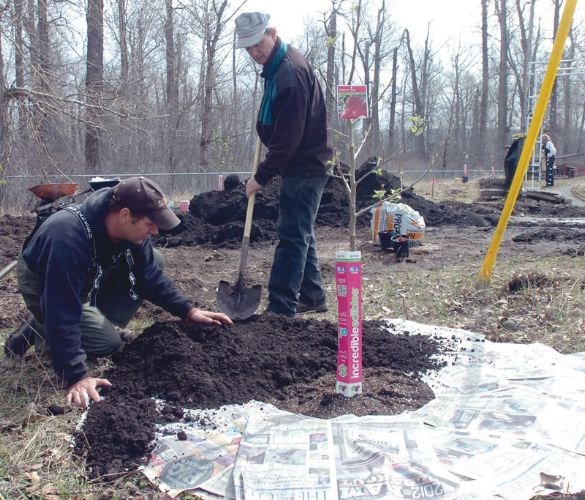Fruit trees have taken root at the Central B.C. Railway and Forestry Museum.
The initiative, funded by the TD Friends of the Environment Foundation and supported by local sponsors, will see approximately 100 apple, plum, cherry and other fruit trees planted throughout the museum's grounds. Arborist Clay Whitney, the volunteer project leader, said the trees will serve multiple roles.
"We're making it more of a park setting. We're thinking about what it'll look like 100 years from now, when they're all still here," Whitney said. "[And] it's creating food for the community. It'll be used as an informational tool for people on how to grow it in their own yards."
Whitney said he selected some less-well-known and older varieties of apple and other fruit trees that will thrive in Prince George's cold climate, including some from Russia.
"It was a natural fit to reintroduce old varieties that fell out of favour..." he said.
Whitney said once the planting, which began on Saturday, is complete, he hopes to hold workshops on pruning, grafting and other techniques.
"People have forgotten how to grow fruits and vegetables. They just go to the grocery store," he said.
One of those techniques is using old newspaper, soaked in water, as a weed barrier instead of landscaping fabric.
"Seeds fall on the black fabric and then the roots grow through it. They you have to pull it all up," he said. "I try to do things as organically as a I can. The newspaper will just break down and become part of the soil."
Because the museum grounds are already fenced, Whitney doesn't anticipate bears will get into the fruit -but if they do, the existing fence can be cheaply electrified to keep the hungry bruins out.
Ranjit Gill, executive director of the Central B.C. Railway and Forestry Museum, said the initiative is part of a plan to make the museum more financially-sustainable.
"Part of the produce will go to not-for-profits and part will be hopefully be sold to [Northern Lights Estate Winery]," Gill said.
The Northern Lights Estate Winery was launched in October on a 4.2-acre parcel of land on in the Nechako River valley near Prince George. The winery plans to uncork its first bottles of apple, rhubarb and other fruit wines by 2015.
As part of the planting process the museum hopes to open the third of the museum grounds that are currently closed to the public by converting them to a park-like setting for picnics and family gatherings, Gills said.
"We have plans for a playground and a mining exhibit, to be more well-rounded," she said. "[And] we'd like to open a daycare upstairs... a daycare that is not just a place for kids to play, but to learn. Part of that learning is learning about the Earth and plants."



